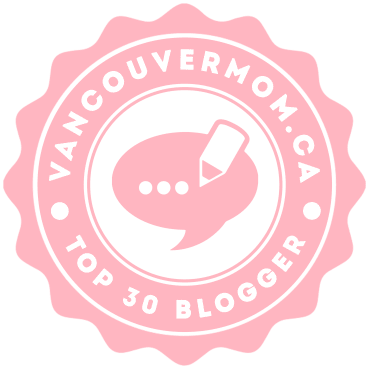|
Have you been thinking about making your own course or program and selling it? When I was helping a client outline her course, I was thinking, “What are the things I wish I knew at the beginning of making my program that would have helped me out a lot?” So I’ll share with you the five things I wish I knew before I built my first program. Course Building When I say “program building”, it might sound a little bit boring or even difficult. Whether you have already built a program or if you want another, you probably have a message to share, and you want to put your knowledge or your expertise out there for your clients to enjoy. Plus, you're looking for products to sell. I’ve been in business for over 12 years now, and close to the very beginning, I created some programs. They’ve been all different kinds of programs styles and lengths:
In them, I have videos, audio, handouts, and guides. I do have a background in curriculum development from my previous job. But there are things I learned that are essential to your success, but make complete sense when you're a solopreneur, a business owner, or someone that just wants to have a few courses or programs on the side. 5 Things I Wish I Knew Before I Built My First Program 1. Clearly define the learning objectives Your clients want to know, “What am I going to learn by the end of this program?” I learned to ask this from my background in curriculum development. The problem is that a lot of times the person creating the program knows the learning objectives, but they don't always share them with their clients/students. Don’t know what your learning objectives are? The question I learned from a coach that really helped me was, “What is your client going to be able to BE, DO, or HAVE by the end of your program?” Then you have to put your learning objectives in the marketing. When you clearly define the learning objectives and share them, your ideal clients will know if this course is right for them because it’s clear the specific goals they're going to be guaranteed to achieve. Another benefit to you is that when you know the learning outcomes, then you can reverse engineer your program, “If I want to have them achieve these learning outcomes, What are the steps to get here?” It's going to help you develop the outline and figure out all the content that goes in. 2. Know WHERE your audience is at Don’t just know WHO your audience is, but also know WHERE your audience is in their growth, their goals and their knowledge of your area of expertise. You can ask yourself these questions:
You need to know where they're at, their needs, their background, and the skill level of your target audience. Knowing who they are and where they're at is so important because it will help you to tailor your program’s content to them. Including, your language, the examples you give, the timeline, the intensity, the activities, and the level of you teach it at. A lot of times I forget that the people I’m teaching have no experience with it whatsoever, and I talk at a high level and I throw jargon in. For example, I might say something like “Yeah, okay, so you set up your email sequence from your lead magnet or your email capture and so you'll want a really good CRM for your campaigns.” I've used a whole bunch of lingo and a whole bunch of words that many don’t know. They don't know what:
I have to teach all of those things by including them in the program. If you're wondering what those things are, a lead magnet is a gift that you give to someone so you could get their email address, for example a quiz or checklist. A CRM is a Client Relationship Management tool like MailChimp, Keap, Infusionsoft, Kajabi, and Constant Contact among many others. An email sequence is a grouping of emails that go out one after another that are all programmed and set to go in automatically in your CRM. (You can check this blog to know all things lead magnets!) You have to know where your audience is at because what you might realize is that you're actually teaching at a super low level, and you need to speed it up or the opposite - teaching at a super high level that you need to dumb it down. For example, the program you're actually creating it a level three, and you need to create a level two program and a level one program, or it's a sequence where they learn A, and then they learn B, and then they learn C. 3. Chunk your content into digestible units Break down your content into smaller modules and lessons. A lot of times people want to just throw these one or two-hour lessons together, but if you bring them into manageable units of 10-15min, it allows your students to have that breather of “Okay, I've learned this. Now, I'm going to take a pause, and then I'm going to go learn this”. It helps them to easily understand it more and to retain it, which is your goal. When you do that, it also gives them a little dopamine hit of feeling like, “Check, I finished video 1. Check, I finished video 2. Check, I finished video 3”. This also helps them to be able to use a small pocket of time to get ahead, rather than feeling they need to carve out 2 hours to get the next piece done. It also helps you to record videos/modules piece by piece in the time you have. 4. Use active learning techniques Passive learning is when your clients are sitting back, and they're being talked at. That's kind of the normal university professor lecture style. However, if you use active learning techniques where they are going to be participating, you're encouraging them to be actively engaged. That's actually where I've had the most success by having them take the knowledge, engage with it, engage with me, engage with activities, then go apply that and have an implementing activity that they do. Then they can apply the knowledge and actually learn and know it. Another thing you can do with this is have them teach someone else in the group a piece of content because if they know how to teach it, then they know it. Don't just have them sit back and be quiet. We want to have them engaging, and so do recall activities, for example, asking them questions, having them answer, having them tell you their thoughts in the class. You could even give them quizzes and case studies to solve. 5. Test your course The last one is testing your course. This is not beta, but before you launch your course, you can do a pre-launch, or you can do a small launch (that's like a soft launch and not public) that you just test on a small group of learners. Three options are to put it out to a part of your list, privately reach out to some clients, or promote it in just a few areas. You don't have to do a beta course if you definitely know you will help your clients achieve your learning objectives. I have another blog post about not having to do beta and being confident that first time around with your program. I suggest you go and read that blog post. By doing a test run of your course with a small group, you're going to be able to identify areas of improvement, which is really important. Then you can make the revisions before you put it out properly and full-on market it. Here's an integral tip here: check the name of the course and make sure that it's actually something that people are wanting. I had named a program “Perfectly Balanced” and people felt that, “I'm never going to be perfectly balanced”, but what I was saying in the program is we're going to find the perfect balance for you. That's too much explaining, and so I wish I tested the name first. I already put the name all over the marketing, in my videos, in everything. It was a dud. I had to change it. Then it became Dynamic Balance instead, and it did very well. By testing it on a small group, you can really see that your target audience is going to really enjoy it or going to get a lot out of it and meet those learning objectives. Bonus Tip: Always market and sell your program or your course before you fully develop it. This means you can have an outline, you can know your learning objectives, you can talk about where your clients are at and where they'll get to, but you don't have to record every video, create every handout and do everything in developing it. Sell it, make sure people want it, then you're paid to develop it. Wrapping Up: I hope you enjoyed this, and you're going to take these tips into your first program or 10th or 100th program. Make sure to watch out for my next blog where I am going to talk about the five things that I've learned in creating my programs that my clients really love. Read my other blogs:
0 Comments
Your comment will be posted after it is approved.
Leave a Reply. |
Archives
June 2024
Categories
All
|
My services |
Privacy Policy
|
Coaching Resources |
Connect with me
|






 RSS Feed
RSS Feed